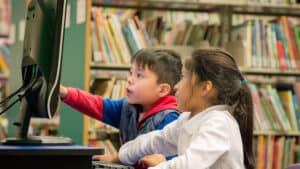
Framing the Land
 April 16, 2024
April 16, 2024
Now, Willard is an artist, curator, and assistant professor at the University of British Columbia (UBC), Okanagan. A mixed Secwépemc and settler, Willard’s research is focused in part on providing a view of the art world in small towns, rural centres, and on reserve. As an artist, curator, and educator, Holly Schmidt is trying to put a frame around something that is often taken for granted: the natural world around us.























